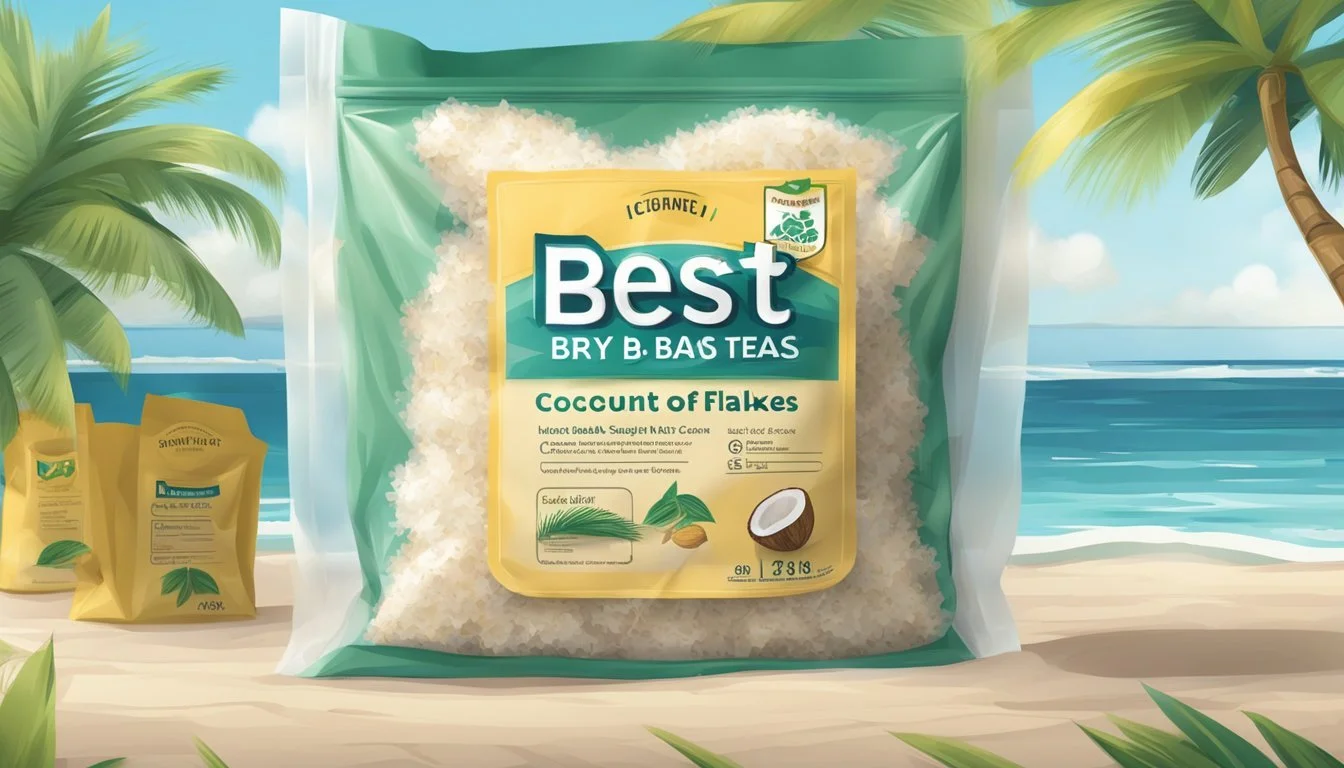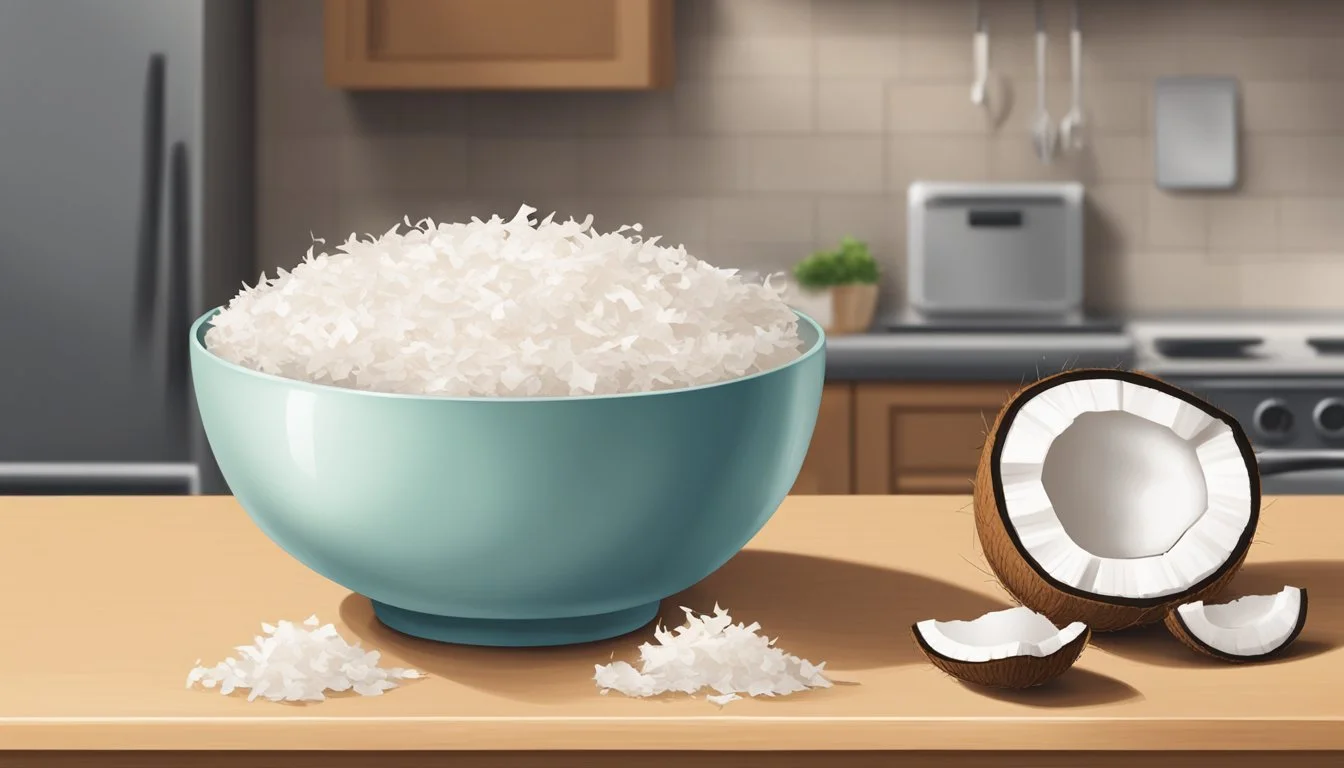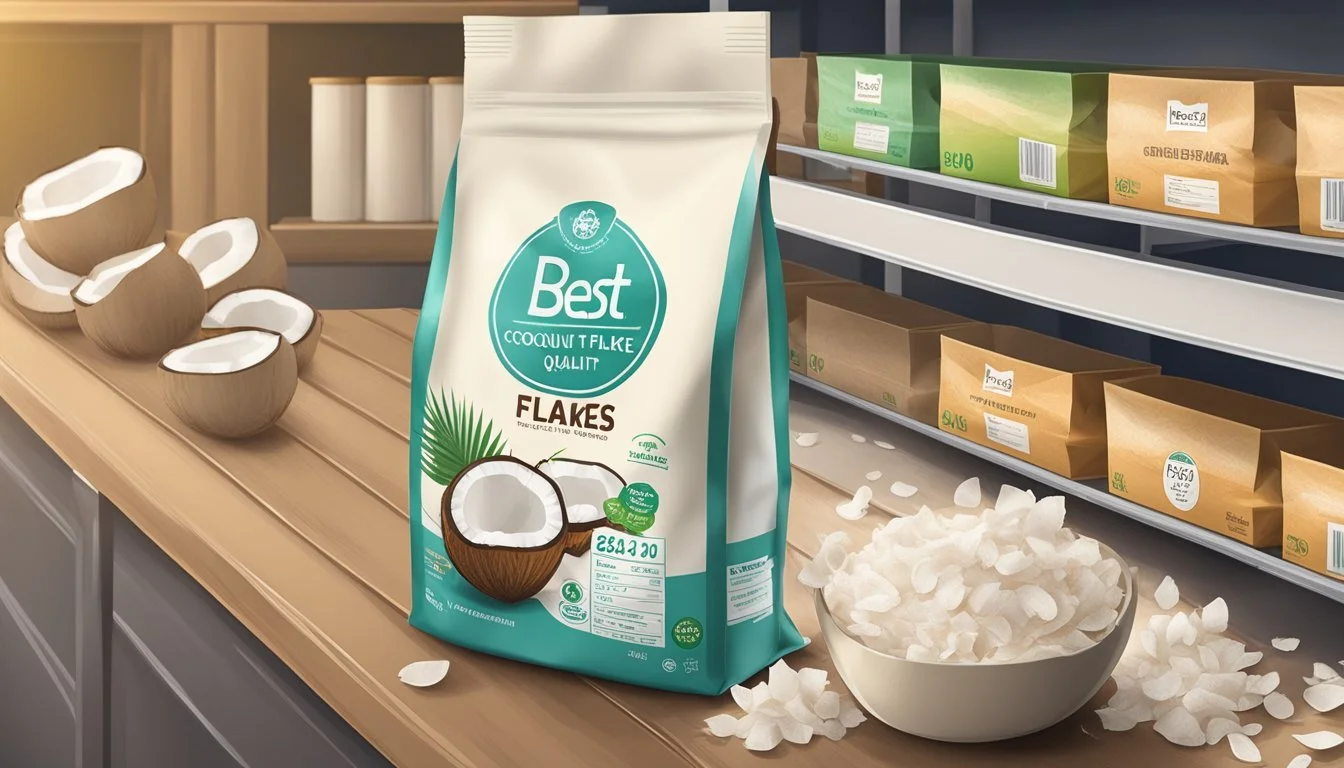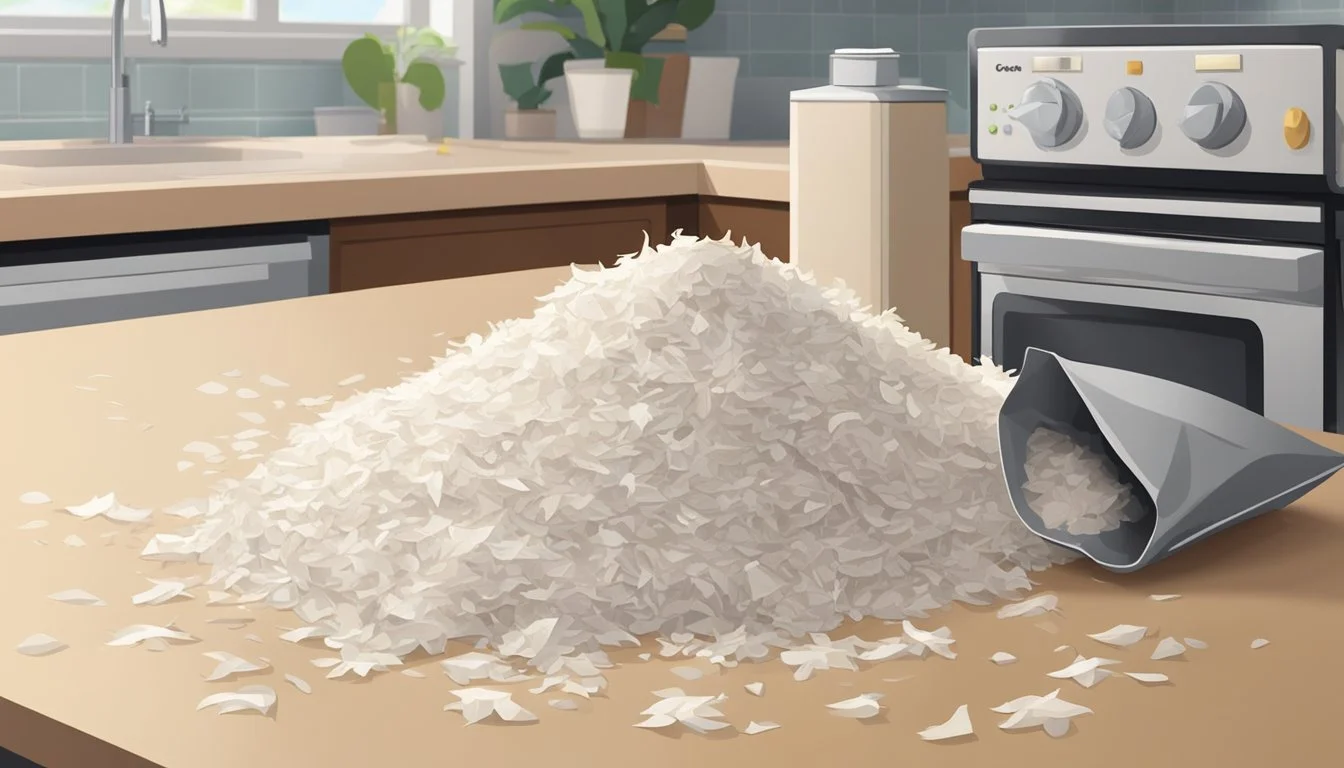Does Coconut Flakes Go Bad?
Shelf Life and Storage Tips
Coconut flakes are a versatile ingredient used in various culinary creations, from baking to cooking and even as a topping for salads and desserts. Yes, coconut flakes can go bad, and their shelf life depends on how they are stored. Proper storage is crucial to maximizing freshness and preventing spoilage.
Unopened coconut flakes typically last between six to twelve months when kept in a cool, dry place. Once opened, the shelf life reduces significantly, lasting about three to four months in the refrigerator. Storing coconut flakes in airtight containers and refrigerating or freezing them can help extend their freshness.
Moisture and humidity are the primary culprits that cause coconut flakes to spoil. To avoid this, use clean, dry utensils when handling coconut flakes and regularly check for signs of spoilage such as an off smell, discoloration, or clumping. If any of these signs are present, it’s best to discard the flakes to ensure food safety.
Understanding Coconut Flakes
Coconut flakes come in various forms, each with distinct characteristics and nutritional benefits. Knowing the differences between these types and their nutritional composition is important for both culinary and dietary considerations.
Types of Coconut Flakes
Coconut flakes are derived from fresh coconut meat and can be categorized mainly into sweetened and unsweetened types.
Sweetened coconut flakes are often used in baking and desserts. They contain added sugar for a sweeter flavor and sometimes preservatives to extend shelf life.
Unsweetened coconut flakes are more versatile and healthier options. They are usually free from added sugars and preservatives, making them suitable for a wider range of dishes, including savory recipes.
Additionally, there is organic coconut flakes, which are harvested and processed without the use of synthetic pesticides or fertilizers, making them a popular choice for those seeking natural products.
Nutritional Profile
The nutritional value of coconut flakes varies depending on whether they are sweetened or unsweetened.
Sweetened coconut flakes tend to be higher in sugar. A typical serving may contain significant amounts of added sugars and calories, potentially impacting its health benefits.
Unsweetened coconut flakes, on the other hand, are rich in dietary fiber and healthy fats. They provide essential nutrients such as manganese, which is important for bone health and metabolic function.
Fat Content: Coconut flakes are high in healthy, medium-chain triglycerides (MCTs), which can support energy levels and metabolic health.
Fiber: Both sweetened and unsweetened varieties offer dietary fiber, aiding digestion.
Manganese: This mineral is found in substantial quantities in coconut flakes, contributing to enzyme function and overall health.
Whether consumed for their flavor or nutritional benefits, understanding the differences between sweetened and unsweetened coconut flakes helps in making informed dietary choices.
Shelf Life and Quality Indicators
Storing coconut flakes properly ensures they maintain their freshness and quality for as long as possible. It is crucial to identify signs of spoilage to avoid consumption of rancid or spoiled coconut flakes.
Determining Freshness
Unopened coconut flakes can last between 12 to 18 months when stored in a cool, dry place. Refrigeration extends their shelf life up to a year. Fresh coconut flakes should have a subtle coconut aroma and a firm, dry texture. Moisture, air exposure, and temperature are key factors that affect freshness.
Once opened, the shelf life reduces to about 6 months if the flakes are stored in an airtight container in the refrigerator. Keeping coconut flakes in the freezer can further extend their longevity. Inspecting the packaging for expiration dates and storage instructions helps ensure maximum freshness.
Signs of Spoilage
Several indicators can signal that coconut flakes have gone bad. Discoloration, such as yellow or brown spots, often means the flakes have started to spoil. Visible mold, even in small specks, is a clear sign that the product should be discarded immediately.
A change in odor is another sign of spoilage. Fresh coconut flakes have a mild, sweet scent, while a rancid smell indicates they are no longer good. Clumping of the flakes, especially if accompanied by a sticky texture, is typically due to moisture and can lead to rapid spoilage.
Regularly checking for these signs helps prevent the use of spoiled coconut flakes in recipes. Proper storage extends their shelf life and maintains quality.
Proper Storage Techniques
Proper storage of coconut flakes can significantly extend their shelf life, whether the package is opened or unopened. Utilizing airtight containers and appropriate storage conditions such as cool, dry, and dark places is essential.
Unopened Packs
Unopened packs of coconut flakes have a relatively long shelf life. To maximize freshness, it is important to store them in a cool, dry place away from direct sunlight.Dark pantry shelves or cupboards work well.
Ensure the packaging remains sealed and intact. If the original packaging is damaged, consider placing it into a secondary airtight container or a resealable bag.
For long-term storage, coconut flakes can be stored in the refrigerator or freezer. This helps maintain quality and prevent moisture absorption or spoilage.
Opened Packs
Once opened, coconut flakes require more careful storage to retain their quality. Airtight containers are crucial to prevent exposure to air and moisture.
Store opened coconut flakes in a cool, dry place like a pantry. If refrigeration is preferred, ensure the container is well-sealed to prevent moisture ingress. Coconut flakes can also be stored in the freezer. Use a freezer-safe airtight container or a resealable freezer bag.
Opened packs should be consumed within a reasonable period to avoid quality degradation. Regularly check for any signs of spoilage, such as discoloration or an off smell.
Effects of Improper Storage
Improper storage methods can significantly impact the shelf life and quality of coconut flakes. Key factors like moisture, temperature, light, and air exposure play critical roles in determining how long your coconut flakes stay fresh.
Moisture and Temperature
Exposure to moisture is one of the leading causes of spoilage in coconut flakes. When flakes come into contact with water, mold can develop rapidly. Humidity in the storage area can also introduce moisture into the product, leading to clumping and bacterial growth.
Properly sealing coconut flakes in airtight containers minimizes contact with moisture and air. Temperature fluctuations can further compromise the quality of coconut flakes. Storing them at a consistent, cool temperature, preferably in the refrigerator or freezer, can significantly extend their shelf life. Heat can cause the oils in the coconut flakes to become rancid, affecting both taste and safety.
Light and Exposure
Direct sunlight can deteriorate the quality of coconut flakes. The UV rays break down the natural oils, leading to rancidity and an off-putting flavor. To avoid this, store coconut flakes in a dark, cool place, away from windows and other light sources.
Air exposure accelerates oxidation, turning the oils in the coconut flakes rancid. It also invites moisture from the surrounding environment, further contributing to spoilage. Using containers that block out light and sealing them tightly can help retain freshness and flavor for longer periods.
By paying attention to these factors, you can ensure that your coconut flakes remain fresh and safe to use for as long as possible.
Utilization of Coconut Flakes
Coconut flakes are a versatile ingredient used in both sweet and savory dishes. They offer unique texture and flavor, enhancing the culinary experience while adding potential health benefits.
Culinary Applications
Coconut flakes are widely used in baking and desserts due to their crunchy texture and sweet flavor. They can top cakes, muffins, or incorporated into cookies and bars. In savory dishes, coconut flakes can be found in curries and stews, providing a subtle sweetness and rich texture.
Adding coconut flakes to recipes like granola or trail mix also adds flavor and nutritional value. Using fresh flakes maintains the quality of the flavor and texture, crucial for achieving the desired refreshing taste in each dish.
Handling Expired Flakes
Using expired coconut flakes requires caution to avoid potential health risks like food poisoning. Before using, inspect them for discoloration or an off-putting odor. Tasting a small amount can also help identify any spoiled flakes.
If found safe, expired coconut flakes can be refreshed by toasting them lightly. While not ideal, this can enhance their flavor and texture for further use in non-critical recipes. Always store opened flakes in airtight containers in the refrigerator to maximize freshness and reduce health risks.
Health Considerations
Coconut flakes offer numerous health benefits but can also pose risks if not stored properly. Paying attention to their nutritional profile and potential for contamination is essential for ensuring they remain a healthy addition to your diet.
Nutritional Benefits
Coconut flakes are rich in dietary fiber, which promotes digestive health and helps maintain steady blood sugar levels. They're also a good source of medium-chain triglycerides (MCTs), which provide energy and may aid in weight management.
The nutritional profile includes essential vitamins and minerals such as manganese, copper, and selenium. Combined, these nutrients support metabolic processes and overall wellness. Because coconut flakes are low in carbohydrates, they are a great addition to ketogenic and low-carb diets.
Risk of Contamination
Improper storage of coconut flakes can lead to potential health risks. When exposed to moisture or air, they can become contaminated, allowing for bacterial growth. In particular, exposure can lead to mold or yeast, which may cause foodborne illness.
Even preservatives may not fully prevent spoilage if storage conditions aren't ideal. Regularly check for signs of spoilage, such as an off-putting odor or discoloration. Using airtight containers and keeping them in a cool, dry place can significantly extend their shelf life and reduce the risk of contamination.







